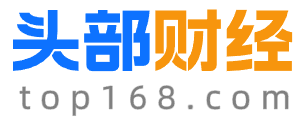
ASML CEO Christophe Fouquet
AsianFin -- Although the progress that SMIC and Huawei have made in the semiconductor sector in recent years are pretty impressive, Chinese companies are 10 to 15 years behind industry giants like Intel, TSMC, and Samsung, said Christophe Fouquet, chief executive of toolmaker ASML.
It's well known that even with the best-in-class DUV tools, Chinese fab SMIC will be unable to match TSMC's process technologies cost-effectively. This is because Chinese companies cannot access leading-edge EUV lithography tools, he explained.
"By banning the export of EUV, China will lag 10 to 15 years behind the West," said Christophe Fouquet in an interview with NRC. "That really has an effect."
ASML holds a critical position in the global chip supply chain, with nearly 90% of the world's chips produced using ASML's lithography systems.
In the semiconductor manufacturing industry, DUV (Deep Ultraviolet) lithography machines are used to produce chips with process nodes of 7nm and above, covering most digital chips and nearly all analog chips.
As advanced processes evolve to 5nm and below, EUV (Extreme Ultraviolet) technology has become the core of future lithography and advanced manufacturing processes, primarily used for chips with process nodes of 7nm and below. Dutch company ASML is the sole supplier of EUV lithography machines. Since delivering its first stepper lithography machine in 1988, ASML has been deeply engaged in the Chinese market for 36 years.
ASML has never delivered its EUV tools to China due to the Wassenaar Arrangement, despite reports of an order from SMIC for one EUV machine. While the specifics remain unclear, ASML refrained from shipping the tool to the Chinese foundry due to U.S. sanctions. However, ASML continued to supply advanced DUV lithography equipment, such as the Twinscan NXT:2000i, which is capable of producing chips using 5nm and 7nm-class process technologies.
As a result, SMIC has been manufacturing chips for Huawei using its 1st and 2nd-generation 7nm-class process technologies for several years, helping the Chinese tech giants mitigate the impact of U.S. sanctions.
Recognizing that EUV tools are unlikely to be delivered to China, Huawei and its partners have begun exploring extreme ultraviolet lithography on their own, with the goal of developing their own chipmaking tools and ecosystem. However, this effort will likely take 10 to 15 years at best. For context, it took over 20 years for ASML and its partners to move from foundational work to commercially available EUV machines, creating the EUV ecosystem. While many of the technologies developed in the early to mid-1990s are publicly known, Chinese companies will not have to start from scratch. Nevertheless, by the time China's semiconductor industry develops Low-NA EUV tools, the West will likely have advanced to High-NA EUV lithography and even Hyper-NA EUV equipment.
The main concern, however, is not that Chinese companies may develop their own EUV tools in 15 years, but that they might replicate ASML's mainstream DUV machines, such as the Twinscan NXT:2000i, in the coming years.
The U.S. government is pressuring ASML to stop providing maintenance and repair services for its advanced DUV systems in China, which would align with existing sanctions against China's semiconductor sector. However, the Dutch government has not yet agreed to this demand. ASML aims to maintain control over its machines in China to mitigate the risk of sensitive information being leaked, which could occur if Chinese companies take over maintenance to keep their chip factories running.






 京公网安备 11011402013531号
京公网安备 11011402013531号